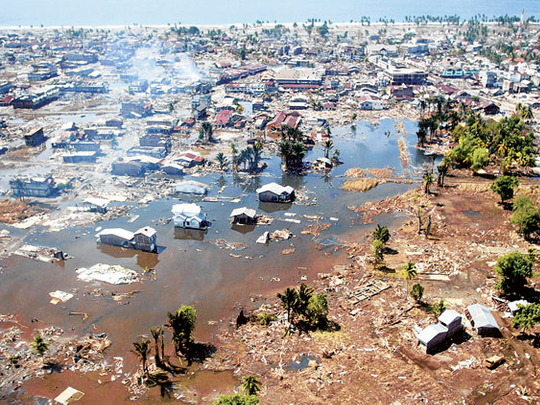
Jakarta Seismologists say last week's powerful earthquake off western Indonesia increased pressure on the source of the devastating 2004 tsunami: a fault that could unleash another monster wave sometime in the next few decades.
"The spring was pushed a little bit tighter," said Kerry Sieh, director of the Earth Observatory of Singapore.
The timing of another megathrust temblor, if it's on the way, "could have been advanced by a few years", he said.
Last week's 8.6-magnitude earthquake also showed that tsunami-ravaged Aceh province, close to the epicentre, remains unprepared for the next major event. Though the quake caused little damage, the country's disaster-management chief acknowledged that evacuation efforts were "a big mess".
Indonesia, located on the "Ring of Fire", an arc of volcanos and fault lines encircling the Pacific Basin, has unleashed some of the deadliest seismic events of the past century. But the 9.1-magnitude quake that struck in 2004, triggering a 30-metre-high tsunami and killing 230,000 people, caught scientists off guard because its fault, west of Sumatra island, had long been quiet.
Research
Since then scientists have conducted a flurry of research, looking at tsunami sand deposits, uplifted coral and GPS data. By observing past patterns of quakes, which tend to be cyclical, they better understand what might happen next, though it's impossible to make predictions with any certainty.
The two last behemoth quakes occurred around 1393 and 1450, and Sieh said the 2004 earthquake may be just the first part of a similar couplet.
Stresses loading up on the fault for centuries were relieved only about halfway eight years ago, Sieh said. And last week's tremor effectively squeezed the overlapping tectonic plates that form the fault.












